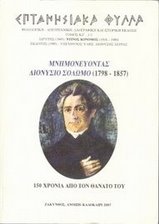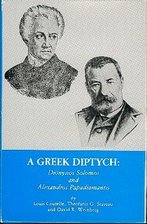Beloved friends in the Lord,
We are sincerely delighted to be here with you as grateful benefciaries of the generous hospitality of the historical Church of Crete. It is through the “fair havens” (the Kaloi Loimenes) of this apostolic island that St. Paul, the great “apostle to the gentiles,” sailed on his way to Rome on his 4th missionary journey, leaving behind Titus as its frst bishop ad his trusted colleague.
We are also pleased that you are convening here at the beautiful Orthodox Academy of Crete, this precious gem of the Ecumenical Patriarchate that combines theoretical exploration and practical application. This institution has a long, proven record of integrating theological study and ecumenical witness. Your presence here during these days confrms this tradition.
Moreover, we were deeply honored by the kind invitation to address you as distinguished members of the Central Committee of the World Council of Churches and spontaneously accepted to subsume this signifcant meeting under the auspices of the Ecumenical Patriarchate for the second time. The frst such blessed occasion was in Heraklion, Crete, almost 45 years ago.
The commitment of the Ecumenical Patriarchate to the vision and mission of the World Council of Churches – from the early formative and creative years through even the more diffcult and contentious moments – has always been unwavering and paramount. Indeed, our own admiration and dedication to the service and ministry of the World Council of Churches is amply evident in our extensive participation in numerous executive roles and responsibilities over many decades. In more recent years, on the occasion of the 60th anniversary of the WCC, we addressed the Central Committee in Geneva in 2008; on these very grounds, we spoke to the plenary of the Faith and Order Commission in 2009; and we communicated a message via video to the International Ecumenical Peace Convocation held in Jamaica last year.
Given all this, we would like to bring to your attention three concepts highlighted in the Apostle Paul’s Letter to Titus that pertain to the sub-themes of your forthcoming 10th General Assembly next year in Busan, South Korea, which comprises a humble prayer that the “God of Life [may] lead us to justice and peace.”
Life is God's gift to humankind and to all creation. It is a gift that emerges from the Trinitarian love and God’s love for the world. The Father loves the Son, while the Holy Spirit strengthens this divine love among the three persons and toward the world. According to the Church Fathers, this gift of life is the result of God’s mystery as Father and “Maker of all things, both visible and invisible.” Creation on the other hand has to live in the fullness of freedom and in pursuit of justice and peace. When humanity experiences such freedom and justice, then it realizes the prefguration of God’s Kingdom and the anticipation of the divine transfguration.
Turning, then, to St. Paul’s Letter to Titus, we observe that the frst concept concerns St. Paul’s advice to “teach what befts sound doctrine.” (2.1) Life Together in Faith: Unity and Mission is the frst sub-theme of the General Assembly in Korea. This is a clear reminder of the foundation of our unity and mission as an ecumenical body. For we must at all times remember – always reminding ourselves and respectfully reminding others – that we constitute a fellowship of churches that confess the Lord Jesus Christ as God and Savior, ultimately seeking and under no circumstances neglecting our calling to visible unity in one faith “that the world may believe.” (John 17.21) We must be careful that, again in the inspired words of Paul to Titus, “in everything we may adorn the doctrine of God our Savior” (2.10) and that “the word of God is not discredited.” (2.5)
The second concept relates to St. Paul’s recognition that “truth accords with godliness” (1.1), that authentic “peace comes from God” (1.4), and that “the grace of God has appeared for the salvation of the whole world.” (2.11) Life Together in Hope: For Justice, Peace and Reconciliation in the World is the second sub-theme of the upcoming General Assembly. “Godliness” implies doing the right thing by all people and by all of God’s creation; it involves honoring and upholding the rights of every person as well as of every living creature. Our doctrine and tradition should inform our life and spirituality; our creed should conform to our worship; or, to adopt the language of the programs of the World Council of Churches, our “faith” should complement our “order.”
Finally, the third sub-theme of next year’s General Assembly is Life Together in Love: For a Common Future. There is a key term that appears in chapter 1, verse 8, of Paul’s Letter to Titus. The word is philoxenos, which signifes “hospitable.” The bishop – or, we could expand this to include every faithful Christian and, indeed, every “lover of goodness” (1.8) as “God’s steward” (1.7) – is called to be both gracious and generous, kind and accommodating. The expression philoxenos literally designates someone who loves strangers. It denotes someone who is not intolerant and exclusive of those who are different or appear foreign. It is the welcoming and embracing of the other – the every other, regardless of religion, race, ethnicity, color, creed and gender – in whom we are to envisage the unique and living image of God. It is the antithesis of racism and xenophobia. We must strive to overcome eastern and western divides of cults and cultures; we must struggle to heal northern and southern divides of peoples and countries.
Dear friends, our prayers are with you as you prepare to organize an Assembly that will proclaim a new message and vision for the years ahead. We also pray for all those involved in these preparations – the members of the Central Committee, the Secretary General, the Assembly Planning Committee under the leadership of His Eminence Metropolitan Gennadios, and each member of the Committee and Staff, as well the Korean Host Committee – so that the WCC member Churches and the entire ecumenical family may experience a peaceful and festive Assembly.
We are called to invoke and embrace God’s justice and peace. If we resist justice and peace, then we are instruments of evil in the world. In some ways, the theme of next year’s Assembly – “God of life, lead us to justice and peace” – is diametrically opposed to the petition in the Lord’s Prayer that God may “lead us not into temptation, but deliver us from evil.”
Permit us to close with words from St. Paul’s Letter to Titus: “My beloved children in our common faith, may the grace and peace of God the Father and Christ Jesus our Savior … be with you all. Amen.” (Titus 1.4 and 3.15)




































